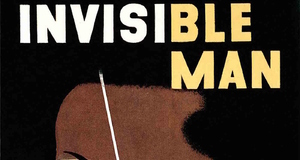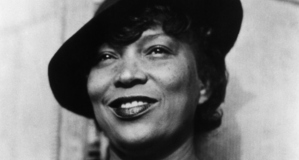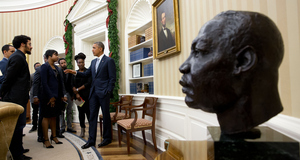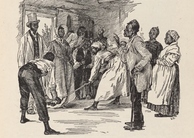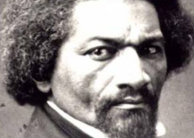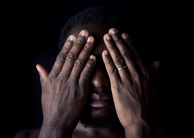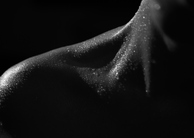Racial Uplift: Acculturation to the Dominant Culture in Contending Forces by Pauline E. Hopkins
By
2011, Vol. 3 No. 10 | pg. 2/2 | « “The Dialectics of Black Womanhood” establishes an awareness of a systemic view that “predisposes us to view black women more in relationship with the dominant culture than within Afro-American culture itself” (Dill 547). Dill imparts previous critics’ models for attempting a definition for the “black experience,” but says that dialectical analysis needs to be in place where the contradictions and complexities of black womanhood are exhibited, in order to truly characterize them as a group; these contradictions, she discloses, “account for the simultaneity of conflict and interdependence which characterize black-white relations in American society” (548). These larger societal infrastructures portray this entrapment within a racialized society. The black-white divide in Contending Forces reflects a wider social movement of a paradoxical declaration of dissociation from, but equality with, the white cultural foundation in place during the nineteenth century. However, Hopkins’s arguments of cultural separation, but also cultural legitimation only serve to perpetuate a tensioned racialized sphere; black and white ideologies exist as two atoms in the same mass, repelling, while at the same time bumping into one another. Dill reasserts this with the modern notion of looking at black women studies as a highly divergent cultural tradition, but the existence of which was interdependent with white bindings of culture. Peterson conceives that while the “African-American discourse appears to reiterate the dominant discourse, it in fact disrupts it,” but also admits to the idea of a “black elite” that sought to “uplift the subaltern classes,” and “this elite’s assimilationist ideology was on one level complicitous with the dominant culture,” although she claims it also subverts the dominant conversation (“Doers of the Word” 12, 14). The characterization of Sappho Clark, part of the educated elite in Contending Forces, who is the heroine and martyr figure of Hopkins’s novel, is worth investigating because of her reflection of white true womanhood, and other subtleties that point to her alignment with a white mentality. Issues of purity are approached in Hopkins’s narrative, especially by Mrs. Willis, who I have already mentioned as an ambassador for true womanhood, as the savior of black femininity. Black women were not characterized by their purity, but, according to Mrs. Willis, if an African-American woman is willing to submit herself to the virtues of true womanhood, purity can be “’…a racial characteristic which is slumbering, but not lost’” (Hopkins 149).Sappho Clark, a woman who has been violated by issues of illegitimacy, namely rape by a white man, still stands erect and virtuous as an exemplar of the true black woman. So, in a way, Sappho has dual functions as an exemplar of a True Woman, but her “Negro” blood and her illegitimacy at the same time subvert that embodiment. But, Sappho, as a heroine, reflects a larger social construct of black women during the late Victorian Era. Shirley Carlson surveys historical documents and records left by black communities during this time period, and illuminates the “dual culture of black Americans” that is embodied by the ideal black woman, who was an archetype from the “cult of true womanhood,” which was “espoused by larger society” (“Black Ideals of Womanhood in the Late Victorian Era” 61). Central to this embodiment of the dominant domestic trope in black society is the figure of the “Black Victoria,” who was “virtuous and modest” as well as “altruistic and pious”; Carlson also brings to light attention paid to this “Black Victoria’s” appearance, who “was well groomed and presentable at all times” (62). Sappho reflects this character not only in her alignment with the trope of true womanhood, but also with qualities emphasized within her own black community, namely that Sappho, like “Black Victoria,” was “intelligent and well-educated,” and she also “displayed a strong community and racial consciousness” (Carlson 62). Interestingly enough, Hopkins also aligns Sappho’s status as a true woman with her appearance, but in adding these nuances, only further aligns Sappho with the white woman’s ideal of true womanhood, rather than from her distinct culture. When first introduced to the domestic space in which Sappho dwells, Hopkins pays careful attention to the flair of domesticity that Sappho adds to her plain abode. Dora was in shock at the transformation of Sappho’s room, as she went to lengths to hide and disguise the room with “drapery curtains of dark-blue denim, beautifully embroidered in white floss” and “plain white muslin draperies” (Hopkins 98). It is not only significant that Hopkins uses words such as “hidden” and “hide” to describe Sappho’s decoration of her domestic space, but also what she disguises her surroundings with. The contrast between the dark hue of the denim and the white lace that surrounds its perimeter can be seen to subtly reflect Sappho’s position as a True Woman. In Chapter XI, Hopkins uses Sappho’s gown of “pure white china silk…[as] she moved ‘a daughter of the gods divinely fair” as a catalyst for epiphany in “one learned doctor” who “beheld in all its hideousness the cankering sore which is eating into the heart of republican principles” (Hopkins 202). So, for the black woman, acquiescing to the cult of true womanhood is not a regression, but a progression that resulted from the trope of racial uplift. The pillars of true womanhood were denied to black women, literarily as well as societally, during the nineteenth century. So, while during this time period, the white woman’s existence saw a push into the public sphere, and sought legitimation of gender in that realm, the black woman found her legitimation in an entrance to a dominantly white trope. Kaplan suggests that there is an imperial scope to domesticity, as cited earlier in this work, that attempts an outreach of “domestication” for the undefined other, the foreign; she parallels the “empire of the mother” with the logic of American imperialism in that “both follow a double compulsion to conquer and domesticate the foreign” (591). Through an analysis of the work of Sara Josepha Hale, Kaplan exposes an undercurrent that not only would “expel black people from American nationality but would also transform American slavery into a civilizing and domesticating mission” (594). These are the larger ideologies in motion during nineteenth century American culture, and even though Hopkins vehemently attempts to subvert and reject the dominant trope by placing her characters, their histories, and their culture within a dominant construct, there are systemic entrapments that lead to the contradictory, dual nature of Contending Forces. Hopkins achieved a great deal for her community through this fictionalized exposure of the white man’s hypocrisy in relation to the black community’s culture. She was able to reverse aspects of her race from the societal debasement it has been subjected to, but her narrative is a two-sided coin. Flip it over, and the duality of her narrative appears. On the other side of that coin exists an acculturation to dominant society, an outcome from the desire for equality; but out of this, there is the revelation of the ingrained Euro-American ideology that has dominated, and albeit diminished, but still dominates American culture today. In seeking legitimation from deep-rooted cultural American narcissism, Hopkins only irradiates her own entrapment, as well as the entrapment of her characters, within a racialized system. ReferencesAbel, Elizabeth. “Black Writing, White Reading: Race and Politics of Feminist Interpretation.” Ed. Elizabeth Abel, Barbara Christian, Helene Moglen. Berkeley: University of California Press, 1997. 102-131. Print. Carby, Hazel V. Reconstructing Womanhood: The Emergence of the Afro-American Woman Novelist. Oxford: Oxford University Press, 1987. Print. Carlson, Shirley J. “Black Ideals of Womanhood in the Late Victorian Era.” The Journal of Negro History 77. 2 (1992): 61-73. Web. 1 June 2011. Cassidy, Thomas. “Contending Contexts: Pauline Hopkins’s Contending Forces.” African American Review 32.4 (1998): 661-672. Web. 1 June 2011. Dill, Bonnie Thorton. “Dialectics of Black Womanhood.” Signs 4. 3 (1979): 543-555. Web. 1 June 2011. Kaplan, Amy. “Manifest Domesticity.” American Literature 70. 3 (1998): 581-606. Web. 1 June 2011. McCann, Sean. “ ‘Bonds of Brotherhood’: Pauline Hopkins and the Work of Melodrama.” English Literary History 64.3 (1997): 789-822. Web. 6 June 2011. Ostendorf, Berndt. Black Literature in White America. Sussex: The Harvester Press Limited, 1982. VII-19. Print. Peterson, Carla L. “Doers of the Word”: African-American Women Speakers and Writers in the North (1830-1880). Oxford: Oxford University Press, 1995. Putzi, Jennifer. “ ‘Raising the Stigma’: Black Womanhood and the Marked Body in Pauline Hopkins’s Contending Forces.” College Literature 31.2 (2004): 1-21 Suggested Reading from Inquiries Journal
Inquiries Journal provides undergraduate and graduate students around the world a platform for the wide dissemination of academic work over a range of core disciplines. Representing the work of students from hundreds of institutions around the globe, Inquiries Journal's large database of academic articles is completely free. Learn more | Blog | Submit Latest in African-American Studies |








